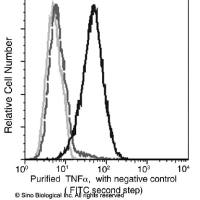CML Mouse Model in Translational Research
互联网
互联网
相关产品推荐

Mouse Reactive Alzheimer's Disease Model Microglia Phenotyping IF Antibody Sampler Kit
¥500

TNF-alpha / TNFA / TNFSF2 Antibody, Mouse MAb | TNF-alpha / TNFA / TNFSF2 鼠单抗
¥800

Recombinant-Rat-Probable-N-acetyltransferase-CML3Cml3Probable N-acetyltransferase CML3 EC= 2.3.1.- Alternative name(s): Camello-like protein 3
¥10808

DLL3-Rovalpituzumab抗体 (Research Grade Rovalpituzumab Biosimilar)
¥1500

Tau Mouse Model Neuronal Viability IF Antibody Sampler Kit
¥500
相关问答

